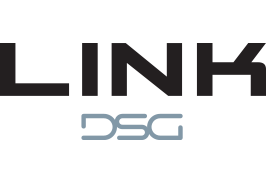Accepted File Types
Thomas Printworks prefers to receive high-resolution, print-ready PDF files.
Files should be packaged to include all fonts and linked images.
Parts of the design that extend to the edge of the page should include the appropriate amount of bleed, and the document bleed settings need to be set accordingly in the Document Setup window.
Be sure to delete unused artwork elements from the artboard prior to submission.
If you are using Multiple Master Pages, be sure to Include all fonts and links to include elements that are used on Master Pages.
Avoid using multiple color transparencies, blends, color filters, etc. that overlap other objects that also have similar effects, as this may causing anomalies during the printing process.
For saddlestitched booklets, please do not create your booklet print file in reader’s spreads. It will not print properly. We would prefer it as single pages with bleed (if required); we will do the imposition for printing.
To convert an InDesign document to PDF, follow these steps:
- Select File > Export.
- Where it says Format, select Adobe PDF (Print).
- Click Save.
- Select Press Quality for the Adobe PDF Preset.
- In the Marks and Bleeds section, under Bleed and Slug, check the box labelled Use Document Bleed Settings. There should be at least 0.125" of bleed (if the document has a bleed defined).
- Click Export.
Files should be packaged to include all fonts and linked images. While images can be embedded, making links unnecessary, there are a couple of downsides to embedding images. First, embedded images tend to make files very large. Second, should the need arise to edit the artwork of an embedded image, having the native artwork on hand is more reliable than trying to edit the embedded image data.
Parts of the design that extend to the edge of the page should include the appropriate amount of bleed, and the document bleed settings need to be set accordingly in the Document Setup window.
When possible, eliminate unnecessary extraneous artwork that may be associated with images that have Clipping Masks associated with them.
Be sure to delete unused artwork elements from the artboard prior to submission.
Apply a clipping mask (including the required bleed) around your final design.
Avoid using multiple color transparencies, blends, color filters, etc. that overlap other objects that also have similar effects, as this may causing anomalies during the printing process.
To convert an Illustrator document to PDF, follow these steps:
- Go to File > Save As.
- Where it says Format, select Adobe PDF (pdf).
- Click Save.
- Select Press Quality for the Adobe PDF Preset.
- In the Marks and Bleeds section, under Bleeds, check the box labelled Use Document Bleed Settings. There should be at least 0.125" of bleed (if the document has a bleed defined).
- Click Save PDF.
Files should be high quality at a resolution (ppi) suitable for the intended viewing distance of the final print (see the section titled Image Resolution for more information).
Files should be packaged to include all fonts and linked images.
Parts of the design that extend to the edge of the page should include the appropriate amount of bleed.
To convert a Photoshop document to PDF, follow these steps:
- Go to File > Save As.
- Where it says Format, select Photoshop PDF.
- Click Save.
While we understand the need to use Microsoft Office products in your day-to-day business operations, these applications are not necessarily intended for the use of designing when commercial printing and critical color is required. The following are some of the problems that Microsoft Office applications create for commercial printers:
- In most cases, they do not provide any notification if a document is missing fonts — the software will automatically perform a substitution.
- They often reduce the resolution of placed artwork.
- They do not utilize or allow for traditional color management or color palettes that are typically associated with commercial printing standards.
- They do not integrate seamlessly between different versions of their own software, especially between Mac and PC platforms.
If you are submitting a document that was created from a Microsoft Office application, we ask that you convert it to PDF before sending. To convert a Microsoft Office document to PDF, follow these steps:
- Go to File > Save As > PDF.
- Choose the Best for Printing/Publishing option.
- Click Export.
Image Resolution
| Viewing Distance | Minimum Resolution |
|---|---|
| 2 ft | 300 ppi |
| 4 ft | 150 ppi |
| 6 ft | 100 ppi |
| 10 ft | 60 ppi |
| 25 ft | 25 ppi |
| 50 ft | 12 ppi |
| 160 ft | 4 ppi |
| 200 ft | 3 ppi |
| 650 ft | 1 ppi |
Small Format B&W, Digital Color and Offset raster images should be 300 ppi at their respective print size.
Viewing distance is the most important factor in determining the ideal resolution of large format artwork. If you know about how far away the average viewer will be from your artwork, you can use the chart to the right as a guide to pick the best resolution. Please note that these are the suggested output resolutions for placed raster images at the final print size. Adjust your artwork appropriately based on the scale of your design.
Color Space
You should always try to keep colors intact in the color space that they were created with no conversions. Converting to a larger or smaller color space will either mute or oversaturate the color. It is best to allow the RIP to do the conversion in order to get color as close as possible, as the machines we are printing on will often have a much larger color gamut than are available to the SWOP and Gracol color spaces. In addition to this, if we convert to CMYK in the file before sending it to the RIP, we will essentially be converting the color twice, as the RIP will still have to do its own color conversion for the print file.
A good example of this would be printing a very rich RGB red. If we converted that red to CMYK, it would be dulled because the CMYK color space is much smaller for reds than in RGB. When we then send it to the RIP, instead of getting a rich red that the printer is perfectly capable of achieving, we get a dull red because we already told the file that it is limited to either the SWOP or Gracol color space.
PMS Colors
PMS (Pantone) colors should be left intact and not changed to RGB/CMYK or some other designated spot color for production purposes. In most cases, our digital printers are calibrated to match the Solid to Process Coated PMS guide. Files with named PMS color will be recognized within our RIP software referencing the Original LAB/Book values and will print within the closest color gamut based on the capabilities of the machine and the white point basis of the material being used. Changing this structure will shift the color unnecessarily and not guarantee the intended output. We must allow the RIP to generate these colors as they should and correct color as necessary from that point.
White Ink
Parts of the image that require white ink in their output should be clearly designated within the file either in different layers (as in Illustrator or InDesign) or as a spot channel within Photoshop. For production purposes, best practice is to use a 100% spot cyan color. Any other needed adjustment for output can be done by prepress technicians.
Bleed
Most printers cannot print all the way to the edge of the page. If your artwork needs to extend to the edge of the page, you will need to extend the artwork by a certain amount beyond the trim line in order to avoid white margins around the artwork. The document must then be printed on a larger sheet of paper and trimmed down. The area between the trim line and the edge of the extended artwork is called bleed.
Generally, 1/8" of bleed is sufficient for small format printing, and 1/4" is sufficient for large. So for example, a 3.5" × 2" business card will have an overall size of 3.75" × 2.25" when bleed is added, and a 36" × 48" poster would have an overall size of 36.5" × 48.5".
A notable exception to this rule is if you are printing a banner that will have sewn edges. In such a case, we require 1.25" of bleed on all sides of your artwork. Otherwise, the extra material used to fold over for sewing may be left white, which has the possibility of showing on the front edges of your banner.

Fonts
Avoid converting fonts to outlines within any program. Conversion to vector based output can often change the way an item should look and make text look fuzzy. Conversion to outlines can also make the files unwieldy and the RIPs may have difficulty processing information with too many nodes. Instead, leave the text as live text and either include the fonts in your packaged file or embed them in a print-ready PDF.
Variable Data Printing (VDP)
If the product you need produced is customizable, we need a high resolution, packaged and layered InDesign file.
We strongly advise against providing Photoshop and Illustrator files for VDP because the software that allows us to program customizable files is only compatible with InDesign. That being said, if you cannot provide us with InDesign files and if you must absolutely submit Photoshop or Illustrator files, so long as they meet the previously mentioned requirements, we can work with the other formats to make InDesign files out of them.
We would prefer the variable/customizable text be on its own layer, but this is not required as long as the text is editable and not outlined. In addition to the issues mentioned eariler regarding outlined fonts, it is especially important that text is not converted to outlines if VDP is required. We need the text to be editable so we can program it to be variable.




